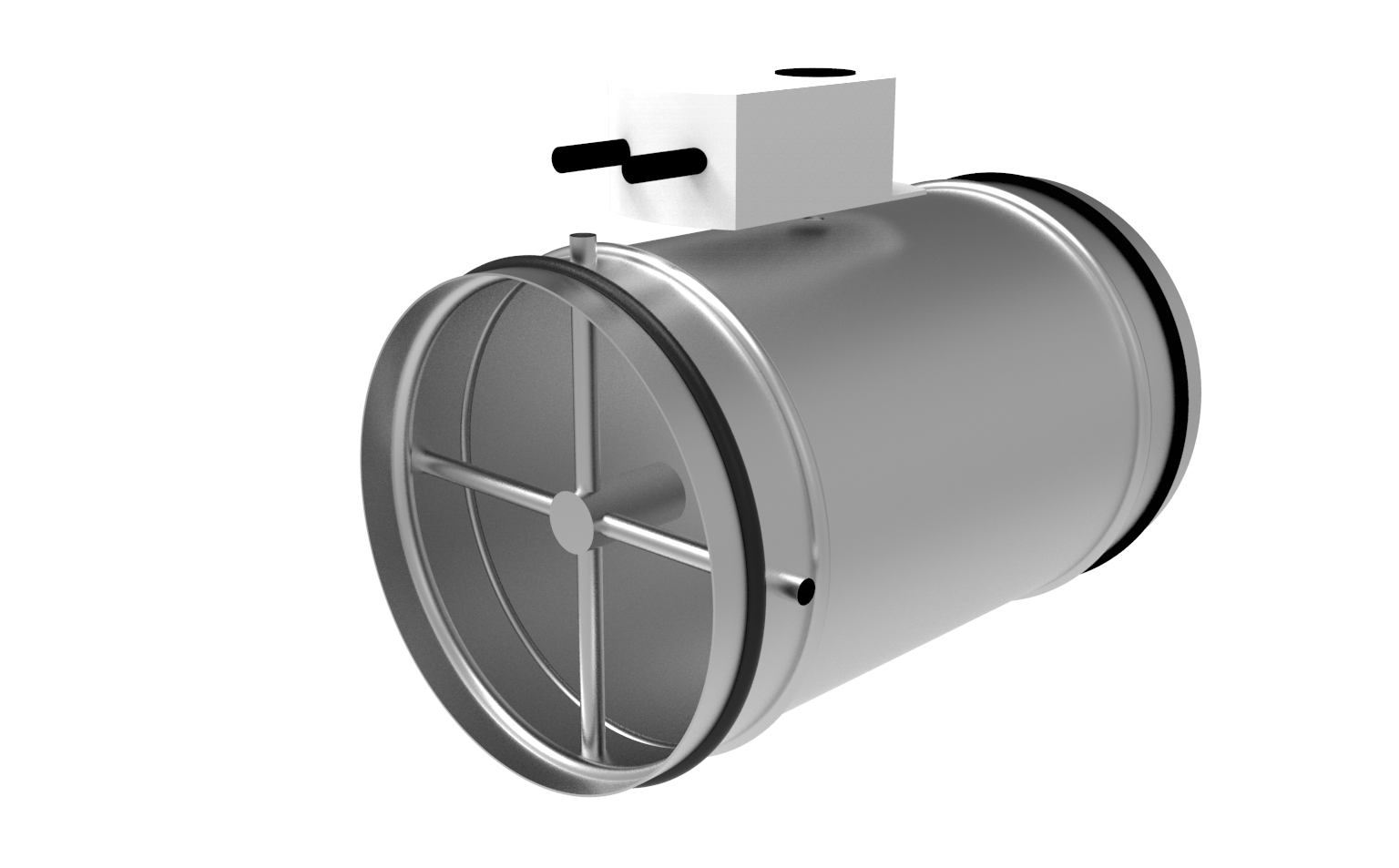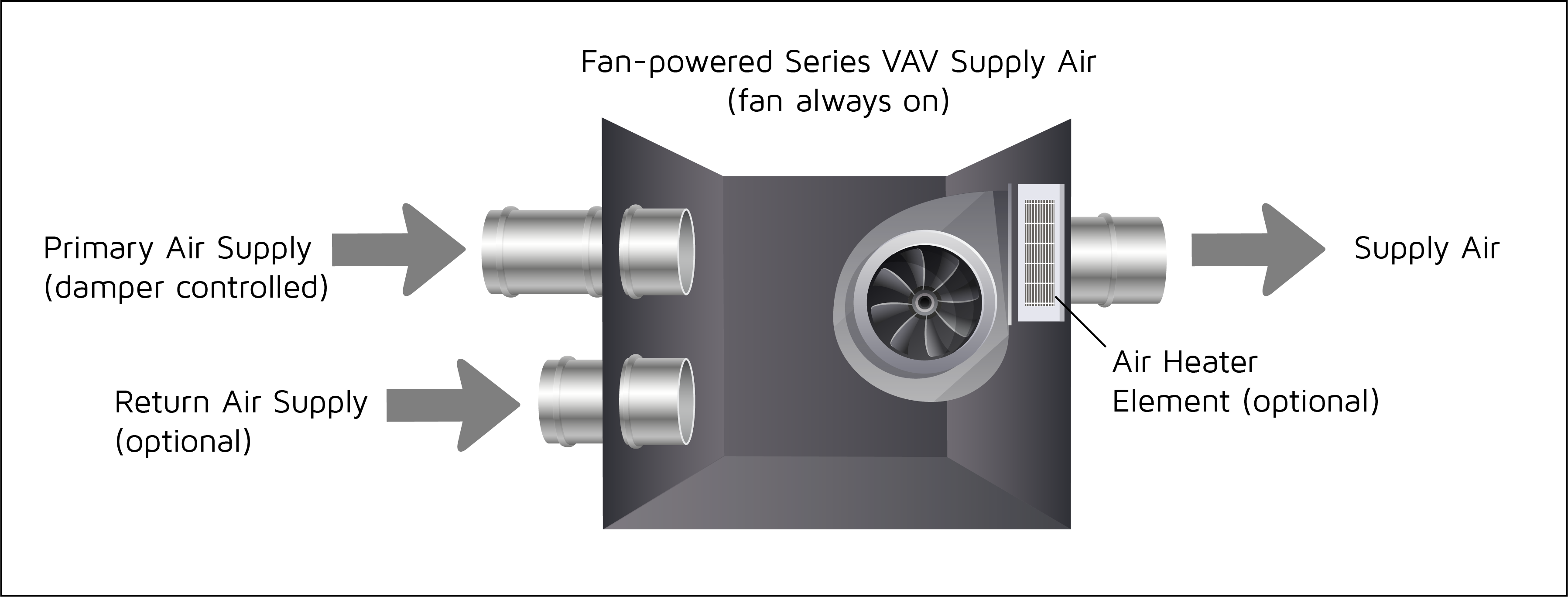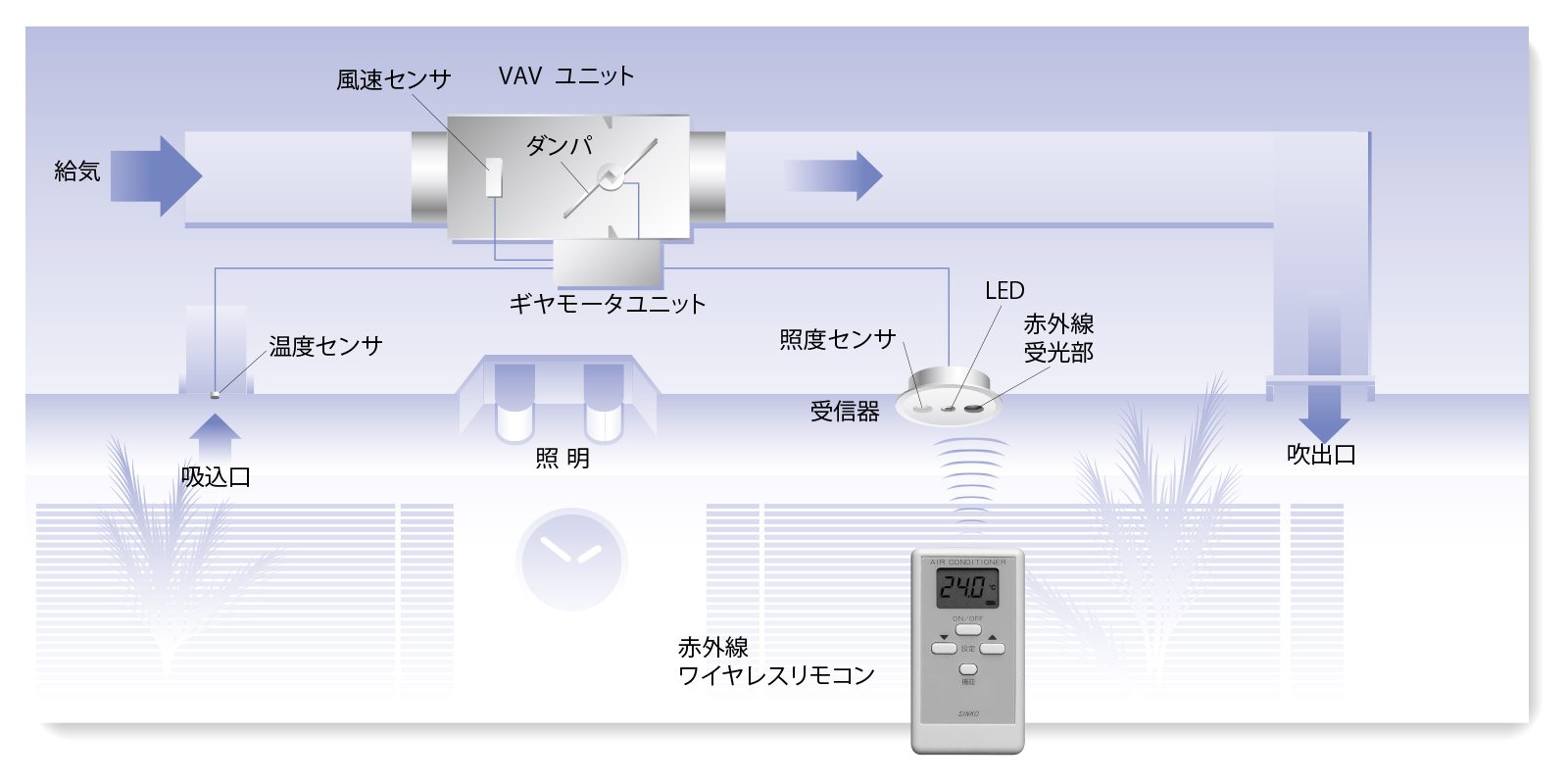
VAV and CAV Units RH international
A variable air volume (VAV) system is designed to meet the heating load of a building with the minimum supply airflow defined via the "Minimum Turndown Ration" value (typically 30% of the full airflow capacity).

CAV System Vs VAV system Related To HVAC in Urdu/Hindi YouTube
Constant air volume (CAV) is a type of heating, ventilating,. Due to fan energy savings potential, variable air volume (VAV) systems are more common. However, in small buildings and residences, CAV systems are often the system of choice due to their simplicity, low cost, and reliability..

التكييف المركزى بنظام ووحدات ال CAV و VAV
March 10, 2022 0 5819 Variable Air Volume (VAV) is the most used HVAC system in commercial buildings. In this article we'll discuss the Variable Air Volume system and single duct VAV boxes with reheat coils.

Types Of Variable Air Volume (VAV) Boxes Computrols Building Automation Systems Simplified
Of course, there are also applications where the more basic systems work perfectly. There are a number of acronyms for the different types of ventilation control systems, but the three you are most likely to come across are: CAV - Constant Air Volume. VAV - Variable Air Volume. DCV - Demand Controlled Ventilation.

電子式 VAV・CAVユニット(STU2) 新晃工業株式会社 SINKO 空気をデザインする会社
What's the difference between VAV vs VVT HVAC Systems? Feb 6th 2017 Before we delve into the differences of Variable Air Volume (VAV) and Variable Volume & Temperature (VVT), we must first learn how they are used in air conditioning a room or space. There are two ways for controlling the air in a room or space.

CAV and VAV Fume Hoods Technology What's the Differnce iQ Labs
The VAV (variable air volume) system is one of the most energy efficient ways for building air-handling system. Offers more precise temperature control as the fan speed varies depending on the temperature in the space. The compressor regulates the refrigerant flow to maintain a constant air temperature.

Infographic Know the difference CAV vs VAV Fume Hoods Kewaunee International Group
A key decision in HVAC design is selecting an adequate air-handling configuration: constant air volume (CAV) or variable air volume (VAV). Each option has advantages and disadvantages, and using the right configuration enhances comfort and efficiency.

التكييف المركزى بنظام ووحدات ال CAV و VAV
CAV and VAV are types of ventilation systems that supply air to each building region (or "zone") and help regulate internal air temperatures. CAV is the older of the two options, leveraging a centralized duct system and compressor to supply constant air flow to different zones.

Constant Air Volume CAV HVAC System YouTube
The difference between a CAV and VAV box is that a VAV box can be programmed to modulate between different flowrate setpoints depending on the conditions of the space.

VAV Systems in ApacheHVAC
Depending on ventilation system: with variable air volume (VAV) or constant air volume (CAV), the air flow regulator construction differs. The most common solutions are described in the next part of the article.. Usually, limit values for air speed is 2-15 m/s and for pressure difference is 30-1000 Pa, but it can vary depending on regulator.

Variable Air Volume VAV system HVAC YouTube
So the main difference in a VAV system, compared to a CAV system, is the VAV terminal. This is located just on the branch coming off of the main duct. Each VAV box serves a certain zone (room or group of rooms). The VAV box is connected via a cable to a thermostat which is located within the room, or the zone. The thermostat will indicate to.

What is a VAV (Variable Air Volume) terminal? Pressure Independent vs By Pass VAV Airmaster
Variable air volume (VAV) systems enable energy-efficient HVAC system distribution by optimizing the amount and temperature of distributed air. Appropriate operations and maintenance (O&M) of VAV systems is necessary to optimize system performance and achieve high efficiency.

【これならわかる】CAV、VAVとは MDとの違いについても紹介
In general, CAV systems are less expensive and simpler to design and install, while VAV systems offer superior performance and energy savings for a higher upfront cost. In most cases, VAV ventilation is the best option because long-term energy savings far outweigh the additional system cost.

ターミナルユニット『産業空調用 VAV/CAV』 クリフ イプロスものづくり
In this video, we discuss two common types of HVAC systems used in commercial buildings: Variable Air Volume (VAV) and Constant Air Volume (CAV). We cover th.

VAV and CAV Terminals Temperature Electronics
There are two main differences that define the systems. The first consideration is at the AHU. Specifically, should the AHU be fitted with a motor starter (MS) or a VFD? Figure 2 At the AHU, engineers have to allow for filter loading and future flexibility.

Difference in AHU vs. Zone Heating in CAV and VAV Systems Sefaira Support
Definition & Meaning Variable Air Volume (VAV) System Basics, Meaning Let's understand the basics of variable air volume system. Some systems provide an immense advantage to humanity. It acts as shielding and offers maximum comfort. One of the efficient ones that help in practical ways is the VAV system.